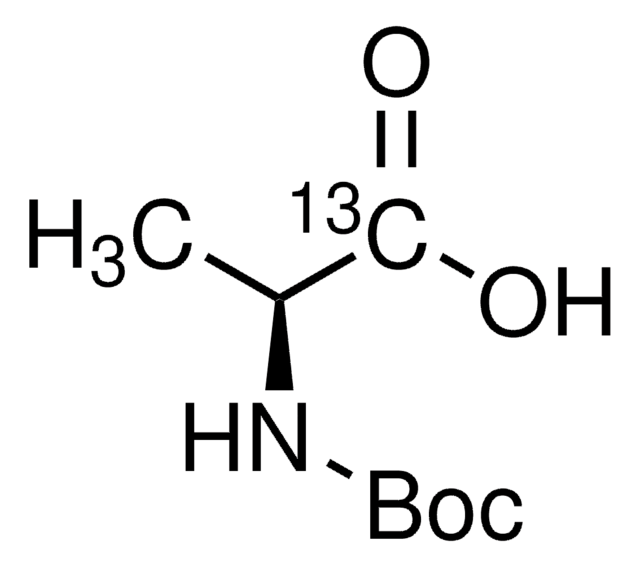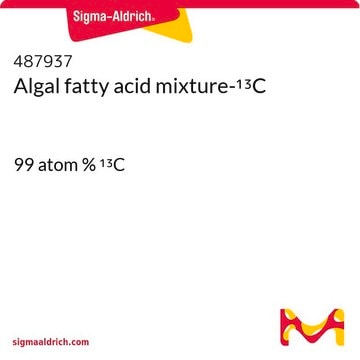Kluczowe dokumenty
490431
Oleic acid-13C18
≥99 atom % 13C, ≥99% (CP)
Synonim(y):
13C Labeled oleic acid, Elainic acid-13C18, Oleic acid-ul-13C
Wybierz wielkość
Wybierz wielkość
About This Item
Polecane produkty
klasa czystości
analytical standard
czystość izotopowa
≥99 atom % 13C
Próba
≥99% (CP)
Formularz
liquid
współczynnik refrakcji
n20/D 1.4595 (lit.)
bp
192-195 °C/1.2 mmHg (lit.)
mp
13.4 °C (lit.)
gęstość
0.947 g/mL at 25 °C
Format
neat
przesunięcie masy
M+18
temp. przechowywania
−20°C
ciąg SMILES
[H]\[13C]([13CH2][13CH2][13CH2][13CH2][13CH2][13CH2][13CH2][13CH3])=[13C](/[H])[13CH2][13CH2][13CH2][13CH2][13CH2][13CH2][13CH2][13C](O)=O
InChI
1S/C18H34O2/c1-2-3-4-5-6-7-8-9-10-11-12-13-14-15-16-17-18(19)20/h9-10H,2-8,11-17H2,1H3,(H,19,20)/b10-9-/i1+1,2+1,3+1,4+1,5+1,6+1,7+1,8+1,9+1,10+1,11+1,12+1,13+1,14+1,15+1,16+1,17+1,18+1
Klucz InChI
ZQPPMHVWECSIRJ-IGBBIXMTSA-N
Szukasz podobnych produktów? Odwiedź Przewodnik dotyczący porównywania produktów
Powiązane kategorie
Opis ogólny
Zastosowanie
Opakowanie
Jakość
Kod klasy składowania
10 - Combustible liquids
Klasa zagrożenia wodnego (WGK)
WGK 1
Temperatura zapłonu (°F)
235.4 °F - closed cup
Temperatura zapłonu (°C)
113.00 °C - closed cup
Wybierz jedną z najnowszych wersji:
Masz już ten produkt?
Dokumenty związane z niedawno zakupionymi produktami zostały zamieszczone w Bibliotece dokumentów.
Klienci oglądali również te produkty
Active Filters
Nasz zespół naukowców ma doświadczenie we wszystkich obszarach badań, w tym w naukach przyrodniczych, materiałoznawstwie, syntezie chemicznej, chromatografii, analityce i wielu innych dziedzinach.
Skontaktuj się z zespołem ds. pomocy technicznej

















